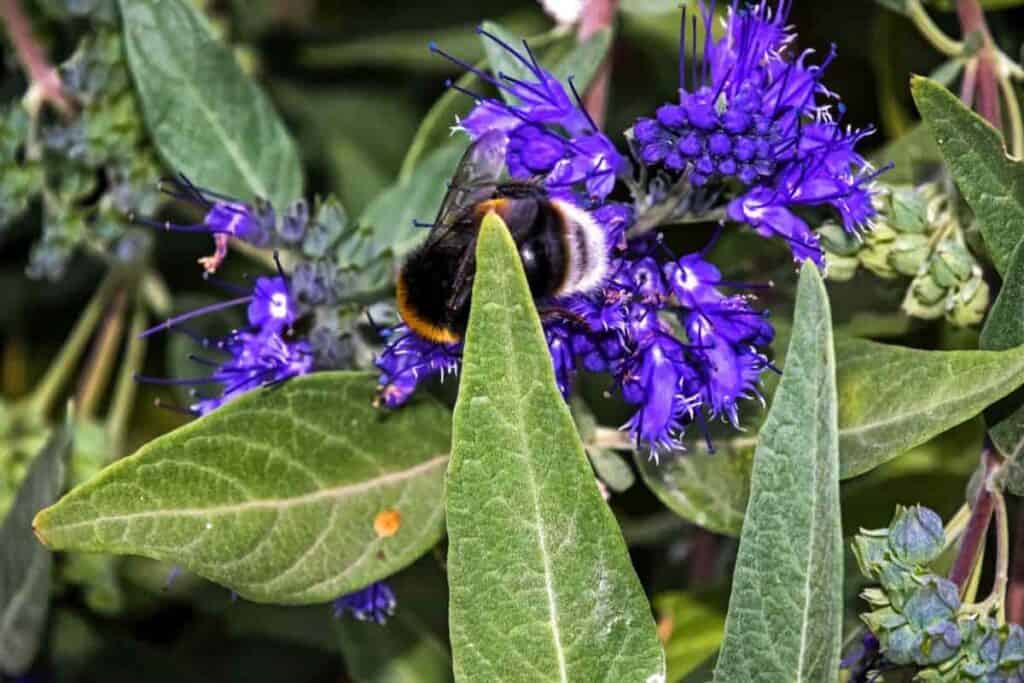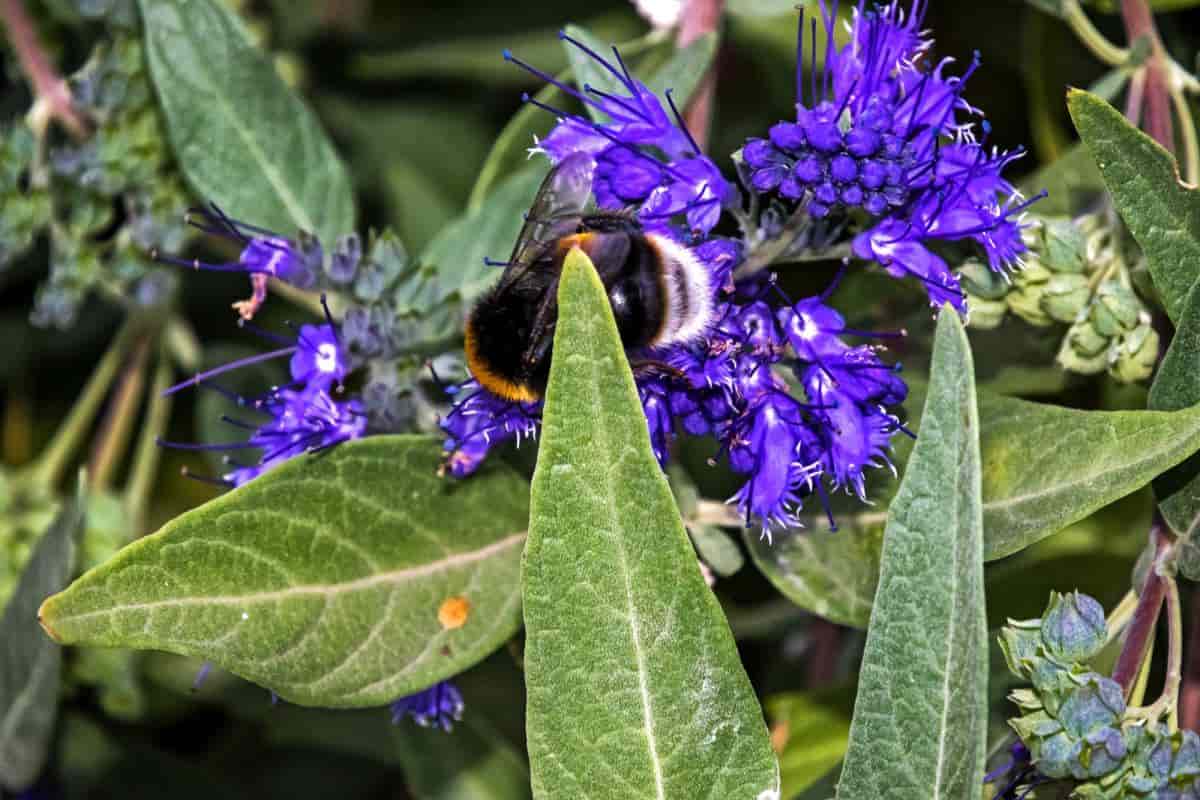After midsummer, the interest in shrub plantings is carried almost entirely by types with brightly colored fruits and foliage.

However, several shrubs furnish attractive bloom right up to frosts, and the succession may continue through the winter, with some shrubs in bloom outdoors virtually every week.
Bluebeard Species
The Bluebeards are hard to beat for an abundance of soft blue flowers in mid-and late summer. The type longest known in this country is Caryopteris incana, also known as C. mastacanthus, and in Europe as C. tangutica.
This species proves quite satisfactory as a garden subject in many country sections in well-drained soil and without too much fertility.
With too hearty fare and especially too much moisture (often from watering lawns or borders nearby), it is somewhat tender and short-lived.
Nevertheless, it has many merits and should be grown where the temperature does not ordinarily fall below 10° degrees Fahrenheit.
Bluebeard Hybrid
About 18 years ago, a hybrid appeared in Europe between the common blue-beard and the much hardier Caryopteris Mongolia, which grows in northern China and Mongolia and stands hard in winters without damage to the lower stems and roots.
The good qualities of the hybrid, Caryopteris clandonensis, make it one of the best subjects that have appeared on the gardening horizon for many years.
It is much hardier than its better-known parent, and the soft blue of its flowers is often considered a lovelier tone for gardens.
The patented blue beard, Blue Mist, appears to be a clone or selection of the hybrid. However, comparing the two makes it difficult to note any distinct differences in their excellence.
Pruning Bluebeards
The Bluebeards all share the advantage of not becoming large and unwieldy. Their height rarely exceeds 3’ or 4’ feet, and their spread is usually half as much.
It is advisable in most cases to give them a general pruning in late winter or early spring, shortening the previous year’s shoots back to within an inch or two of the base.
One or two pairs of buds should be left at the base of each strong shoot, and thin ones removed. Even in trimming the dormant branchlets, one is impressed with the pleasant aromatic properties of the plants.
This refreshing fragrance is much more pronounced when fresh shoots or leaves are pressed between the fingers.
The foliage is a lovely grayish green, and the more or less oblong, pointed leaves vary from I to 3” inches in length. Those of common Bluebeard are margined with teeth, but the newer kinds are without teeth or rarely toothed.
Blooms Of Bluebeards
In August or September, depending upon location and season, the Bluebeards start their amazing period of bloom.
This display is impressive not alone for the soothing effect of an abundance of soft blue flowers but also because it lasts more than a month unless the weather is unfavorably dry.
The individual flowers are small—less than ½” an inch long—with tubular corollas lobed at the open end. Four slender stamens project from these small blue trumpets.
The flowers are borne in small clusters in the leaf axils of the upper portion of the shoots. The clusters are so dense that the two at each node seem to make a collar or ruff.
Bloom On New Wood
As the shrub remains in bloom for a long time, the blooms open in progression from near the base of the shoots to the apex; the effect is charming.
As is the case with nearly all shrubs flowering so late in the season, except some hydrangeas, the flowers are produced on new growth, and heavy pruning in the spring does not reduce the quantity of bloom.
Bluebeards should be given a location in full sunlight and well-drained soil. Heavy soils may be suitable by mixing in as much as ½’ sand and a generous amount of humus in a hole 3’ feet across and 1 ½’ feet deep. Growth starts late in the spring; the best time to plant is when the dormant period ends.
Small plants may be set out almost any time, even in active growth, if the soft shoots are cut back about halfway to the base, and the plants are covered with a basket for a few days until the roots are re-established.
Bluebeards should not be planted in the autumn, as the roots would need more opportunity to establish before the dormant season.
Accents For Borders
These small shrubs are associated more with flower borders than regular shrub plantings. Some of the best effects may be obtained by using them behind or at the ends of borders of flowers in tones of pink, blue, or yellow or with such colorful companions as petunias, verbenas, chrysanthemums, coneflowers, and heleniums.
Bluebeards are especially appropriate in herb gardens and also near stone walls and paved areas. Very pleasing combinations can be arranged with dwarf conifers, hollies, and other evergreens at the edge of a terrace or in a narrow space between a walk and a building.
Yearly spring pruning not only ensures boundless growth but makes it possible to adjust the shape of the shrubs to location and neighbors.
44659 by Ben Blackburn
